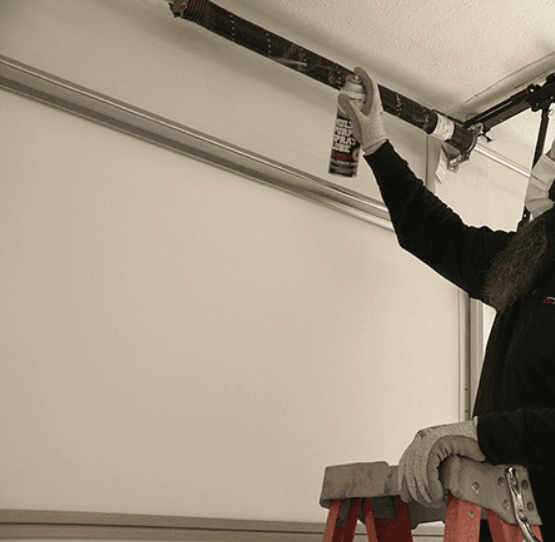Garage Door Spring Repair Made Simple: Avoiding Costly Mistakes
- COMMERCIAL GARAGE DOOR REPAIR
- GARAGE DOOR OPENER INSTALLATION
- GARAGE DOOR SPRING REPAIR
- SAME-DAY GARAGE DOOR REPAIR
- CUSTOM GARAGE DOOR
- GARAGE DOOR OPENER REPAIR
- GARAGE DOOR TRACK REPAIR
- GARAGE DOOR CABLE REPAIR
- GARAGE DOOR PANEL REPAIR
- LOCAL GARAGE DOOR REPAIR
- GARAGE DOOR REPLACEMENT
- NOISY GARAGE DOOR FIX
- GATE REPAIR
- GARAGE DOOR INSTALLATION
- GARAGE DOOR SECTION REPLACEMENT
- OVERHEAD GARAGE DOOR REPAIR

Garage Door Spring Repair Made Simple: Avoiding Costly Mistakes
A broken garage door spring can disrupt your daily routine, turning a simple task like parking your car into a stressful ordeal. If you’ve faced this issue, you’re not alone. Clintonville Garage Door Repair has helped countless homeowners resolve these problems quickly and efficiently. Understanding how to approach garage door spring repair can save you money, prevent accidents, and extend the life of your garage door system.
At the heart of every garage door system, the springs do the heavy lifting. Mastering garage door spring repair isn’t just about fixing what’s broken—it’s about ensuring long-term functionality and avoiding common problems that can lead to costly mistakes. This guide breaks down actionable steps and key insights to make your repair experience as smooth and effective as possible.
Why Proper Garage Door Spring Repair Matters
Garage door springs are designed to counterbalance the weight of your door, making it easy to open and close. Over time, these springs endure wear and tear, eventually leading to failure if not maintained or repaired. When neglected, failing springs can cause your garage door to become unbalanced, jammed, or even fall suddenly, posing a danger to your property and household.
Avoiding Common Mistakes
Garage door spring repair isn’t a task to take lightly. Missteps can lead to injury, damage, or increased repair costs down the line. Here are common mistakes to avoid:
- Using the Wrong Type of Spring
Garage doors use two main types of springs—torsion springs and extension springs. Using the wrong type during a replacement can lead to improper function or system failure.
- Overtightening or Under-tightening Springs
Springs need precise tension. Incorrect adjustments may cause the door to operate unsafely or strain the opener.
- Skipping Safety Measures
Springs are under high tension and can cause severe injuries if handled incorrectly. Neglecting proper safety precautions, like wearing protective gear or securing the door, can lead to accidents.
By understanding these pitfalls, you can take the right steps to ensure a smooth repair process.
Key Steps for Repairing Garage Door Springs
1. Identify the Type of Spring in Your Garage Door System
There are two main types of springs, each with unique characteristics and repair processes:
- Torsion Springs
Torsion springs are mounted horizontally above the garage door and use torque to lift and lower the door. They are durable and efficient but significantly more complicated to repair or replace.
- Extension Springs
Extension springs are installed along horizontal tracks on either side of the door. They are more common in older garage systems and are generally easier to repair than torsion springs. However, they tend to wear out faster and may require replacement more often.
Knowing your spring type ensures you use the correct replacement parts and tools.
2. Gather the Right Tools and Materials
Repairing or replacing springs requires proper tools. Essentials include:
- Winding bars for torsion spring adjustments.
- A wrench set for securing bolts and fasteners.
- Lubrication to ensure smooth operation post-repair.
- Clamps to hold the door in place for added safety.
Using the right tools not only makes the process smoother but also reduces the risk of damage or injury.
3. Follow Manufacturer Guidelines and Safety Precautions
Every garage door system comes with a unique set of specifications from the manufacturer. Consult the manual to ensure you’re following the manufacturer’s guidelines for your specific garage door model.
Safety should always come first. Before starting repairs:
- Disconnect the garage door opener.
- Clamp the door securely to prevent sudden movements.
- Always wear gloves and safety goggles.
These precautions will help you safely handle the high tension present in garage door springs.
Tips to Prevent Costly Repairs in the Future
Regular Inspections and Maintenance
One of the easiest ways to avoid expensive repairs is to routinely inspect your garage door system. Look out for signs of wear, such as:
- Gaps in torsion springs or overstretched extension springs.
- Rust or corrosion on spring surfaces.
- Fraying cables or unusual noises during operation.
Performing regular maintenance, like lubricating moving parts and tightening loose bolts, can also extend the lifespan of your springs and ensure smooth operation.
Replace Both Springs at the Same Time
If one spring has broken, the other is likely near the end of its life, even if it hasn’t failed yet. Replacing both springs simultaneously ensures balanced operation and prevents uneven tension, which can strain the garage door opener.
Enlist Professional Help When Needed
While some homeowners feel comfortable performing minor repairs, spring replacement can be risky and requires precision. Enlisting experts like Clintonville Garage Door Repair ensures that repairs are done safely, efficiently, and correctly the first time. Professionals have the tools and expertise to prevent damage and reduce long-term costs.
Final Thoughts
Garage door spring repair doesn’t need to be overwhelming. By understanding the role of springs, diagnosing issues early, and following best practices, you can avoid costly mistakes and ensure your garage door operates smoothly. If you’re ever in doubt or want to ensure repairs are handled safely and effectively, Clintonville Garage Door Repair is here to help.
Remember, routine maintenance and timely repairs are your best defense against expensive and inconvenient breakdowns. With proper care and attention to detail, you can keep your garage door system in great shape for years to come.
